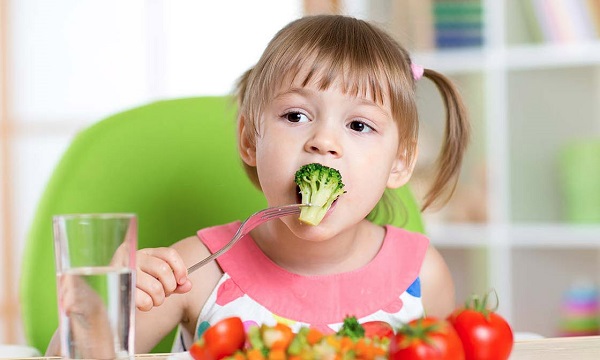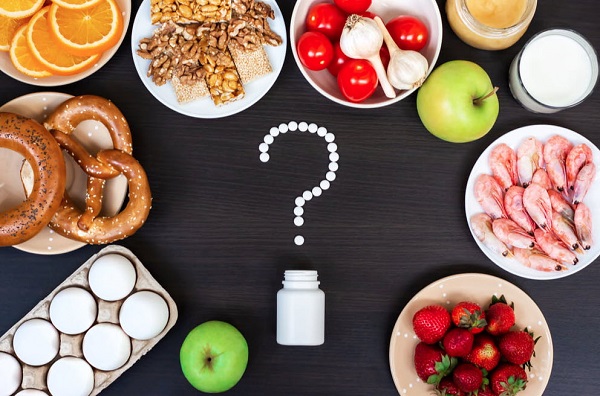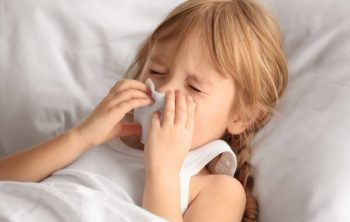In this blog post, we’ll discuss the causes of food allergies in children, the symptoms you should look out for, and how they can be treated. Food allergies are a growing problem for children in the United States. A food allergy is an abnormal response to a food protein that occurs in some people.
Symptoms can range from mild, such as a skin rash, to life-threatening, such as anaphylactic shock. The best way to prevent an allergic reaction is to identify and avoid the food or foods that trigger it. Treatment for food allergies typically includes avoidance of the allergen and use of epinephrine if a reaction occurs. Early diagnosis and treatment of food allergies is important to ensure a child’s safety and optimal health.
Contents
What is the difference between food allergy and food intolerance?
The main difference between food allergy and food intolerance is that food allergy affects the immune system, while food intolerance does not.
Symptoms of food allergy can range from uncomfortable to life-threatening, while symptoms of food intolerance are typically less serious.
It’s important to get a diagnosis from a healthcare professional if you think your child has either food allergy or food intolerance.
What is food allergy?
A food allergy is an abnormal response of the body to a certain food. It is important to know that this is different than a food intolerance, which does not affect the immune system, although some of the same symptoms may be present.
When a person with a food allergy consumes even a small amount of the offending food, they may experience severe and potentially life-threatening reactions. These reactions can include swelling of the throat and difficulty breathing, as well as nausea, vomiting, cramping, and diarrhea. In some cases, anaphylactic shock may occur, which can be deadly.
There are many different foods that can cause allergies, but some of the most common include milk, eggs, peanuts, tree nuts, fish, shellfish, soy, and wheat. Allergies can develop to any food at any time, though they are most commonly seen in young children.
If you suspect that you or your child may have a food allergy, it is important to see an allergist for proper testing and diagnosis. Do not try to diagnose yourself, as this could be dangerous. Once a food allergy has been diagnosed, the best course of action is to avoid the offending food entirely. In some cases, your allergist may prescribe epinephrine (an emergency injection) to carry with you in case of accidental exposure. With proper precautions and treatment, people with food allergies can live happy and healthy lives.
What is food intolerance?
Food intolerance is different from food allergy because it doesn’t involve the immune system.
With food intolerance, people may have some of the same symptoms as those with food allergies, but they are usually less severe and don’t happen every time the person eats the offending food.
It’s thought that around 15% of adults in the United States have some form of food intolerance.
The most common type of food intolerance is lactose intolerance, which happens when people cannot digest lactose, a sugar found in milk and other dairy products. Other types of food intolerance include reactions to gluten (a protein found in wheat, rye, and barley) and histamine (a substance found in some foods).
What causes food allergy?
When a person has a food allergy, their body reacts to certain proteins in the food as if they were harmful. The immune system produces antibodies called immunoglobulin E (IgE) to protect the body from these proteins. When the person eats the food again, the IgE antibodies sense the proteins and release histamines and other chemicals into the bloodstream. This can cause a range of symptoms, from mild (such as itching and hives) to severe (such as trouble breathing and swelling of the throat). In some cases, it can even be life-threatening.
What foods most often cause food allergy?
Approximately 90 percent of all food allergies are caused by the following eight foods: milk, eggs, wheat, soy, tree nuts, peanuts, fish and shellfish.
Of these, eggs, milk and peanuts are the most common triggers in children. Wheat, soy and tree nuts are also frequently to blame. In adults, meanwhile, the most common offenders are peanuts, tree nuts, fish and shellfish – which often cause the most severe reactions. Overall, nearly 5 percent of children under age five suffer from food allergies. And from 1997 to 2007, the prevalence of reported food allergy increased by 18 percent among kids aged 18 and under. So it’s important to be aware of the risks and take steps to protect your child if necessary.
What are the symptoms of food allergy?
The most common symptoms of food allergy are vomiting, diarrhea, cramps, hives, swelling, eczema, itching or swelling of the lips, tongue, or mouth, itching or tightness in the throat, difficulty breathing, wheezing, and lowered blood pressure. However, each child may experience symptoms differently. Symptoms may begin within minutes to an hour after ingesting the food. If you think your child may be experiencing a reaction to a food, it is important to seek medical attention immediately.
In severe cases, even a trace amount of the allergen can trigger a reaction. For example, just 1/44,000 of a peanut kernel can cause a reaction in people who are severely allergic to peanuts. Symptoms of food allergy may resemble other medical conditions, so it’s always important to consult your child’s doctor for a diagnosis.
If your child has a food allergy, the best way to prevent a reaction is to avoid the offending food altogether. But because accidental exposure can happen, it’s important to be prepared. If you know your child is allergic to a particular food, make sure he or she always carries an emergency epinephrine auto-injector (such as EpiPen®). Epinephrine is the first-line treatment for severe allergic reactions.
In case of accidental exposure, use the auto-injector immediately and then call 911. Even if your child seems fine after the injection, he or she should still go to the emergency room for further observation.
Treatment for food allergy:
After seeing your child’s doctor and finding foods to which your child is allergic, it is very important to avoid these foods and other similar foods in that food group. If you are breastfeeding your child, it is important to avoid foods in your diet to which your child is allergic. Small amounts of the food allergen may be transmitted to your child through your breast milk and cause a reaction.
It is also important to give vitamins and minerals to your child if he or she is unable to eat a variety of foods because of food allergies. This will help ensure that your child grows and develops normally. If you have any questions about treatment for food allergy, be sure to ask your child’s doctor.
If your child has a severe food allergy, his or her health care provider may prescribe an emergency kit that contains epinephrine. This medication can help stop the symptoms of a severe reaction.
Your child’s doctor may also recommend reintroducing certain foods after a period of time to see if he or she has outgrown the allergy. Many allergies are temporary in children, and the food may be tolerated after age 3 or 4.
Milk and soy allergy:
Most allergies to milk and soy are seen in infants and young children. The symptoms are often unlike the symptoms of other allergies, and may include colic, blood in the stool, or poor growth.
If it is thought that a child is allergic to milk, the doctor will usually change the baby’s formula to a soy formula or breast milk. If the child has problems with soy formula, the health care provider might change him or her to an easily digested hypoallergenic formula.
Prevention of food allergies:
The development of food allergies cannot be prevented, but can often be delayed in infants by following these recommendations:
- If possible, breastfeed your infant for the first six months.
- Do not give solid foods until your child is 6 months of age or older.
- Avoid cow’s milk, wheat, eggs, peanuts, and fish during your child’s first year of life.
- If you have a family history of allergies, talk to your doctor about the best way to introduce solid foods to your child. You may need to do so earlier than 6 months or avoid certain foods altogether.
There is no sure way to prevent food allergies, but following these recommendations may help delay their development and lessen their severity.
How is food allergy diagnosed in a child?
Your child’s healthcare provider will do some tests to make an exact diagnose. These may include the following:
Skin prick test:
Skin prick tests are the most common allergy tests. They measure if there are IgE antibodies to specific allergens such as foods, pollens, or animal dander.
A small amount of diluted allergen is put on the skin. The area is pricked or scratched. If a child is allergic to the allergen, a small raised bump that looks like a mosquito bite appears after about 15 minutes.
Testing for many allergens may be done at the same time. Skin test results are available right away after the testing is done.
Skin prick testing may not be done if your child very recently had a severe reaction, or if he or she has eczema or another skin condition that might affect the test results.
Blood tests:
Blood tests for allergies measure IgE antibodies to specific allergens in the blood. The blood test that is most commonly used is called RAST (radioallergosorbent test). Blood tests may be used when skin tests can’t be done or if there are still questions about a food allergy after the skin test.
A positive blood test does not always mean that your child has a specific allergy. Any positive blood test needs to be explained by a healthcare provider who is familiar with the tests and knows your child’s health history. These tests take longer to get results. They may be more costly than other allergy testing options, but they may be covered by insurance.
Food challenge test:
A food challenge test is a diagnostic tool used by allergists to determine whether or not a person has an allergy to a particular food. The test is conducted by giving the person a very small amount of the food in question, either by mouth or by inhalation, and then monitoring them closely for any reaction. If the allergist believes that the person will be able to eat the food again without having a reaction, the food challenge test is typically considered to be positive.
Not a food allergy:
When most people think of food allergies, they think of an immediate and severe reaction, such as anaphylaxis, that can be life-threatening. However, food allergies can also cause more subtle symptoms that may not be immediately apparent or may even be mistaken for another condition entirely. It’s important to be aware of the various symptoms that food allergies can cause so that you can get proper treatment if you or your child experience them.
- Food poisoning: While food poisoning can certainly cause unpleasant symptoms like diarrhea or vomiting, it is usually not a true allergy. Food poisoning is typically caused by bacteria in spoiled or undercooked food, not by a reaction to a particular ingredient.
- Drug effects: Certain drugs, such as antibiotics, can cause allergic reactions in some people. But more often, it is a specific ingredient in a food or drink that is the culprit. For example, caffeine can make your child shaky or restless.
- Skin irritation: Many foods contain acids that can irritate the skin, especially if they are consumed in large quantities. Citrus fruits and tomato products are common examples. This is not an allergy, but rather a form of chemical burn.
- Diarrhea from too much sugar: Eating too much sugar can cause diarrhea in small children. This is because their bodies cannot process large amounts of sugar properly. However, this is not an allergy and will not cause any long-term harm.
People with lactose intolerance have trouble digesting milk sugar, called lactose. This can lead to stomachaches, bloating, and loose stools. Lactose intolerance is not caused by the immune system, so it is not a true allergy. However, it is still important to avoid milk and milk products if you are lactose intolerant.
If you or your child experience any of these symptoms after eating, it’s important to see a doctor to rule out a true food allergy. With proper diagnosis and treatment, most people with food allergies can enjoy all their favorite foods without worry.
Dining out with food allergies:
Here are some tips for dining out with a food allergy:
- Make sure to inform your waiter or waitress about your child’s allergy. This will help them take the necessary precautions in handling your child’s food.
- Ask about the ingredients in each dish and how it is prepared. This will help you determine whether or not the dish is safe for your child to eat.
- Be cautious of cross-contamination. Even if a dish does not contain the allergen, it may have come into contact with it during preparation.
- Bring along safe snacks for your child in case there are limited options available at the restaurant.
- Finally, be patient and persistent. It may take some trial and error to find a restaurant that can accommodate your child’s needs, but it is possible to find one that works for you.
The adult in charge should also be aware of the emergency plan in case of a reaction, and know how to administer medication if necessary. If your child has a severe allergy, it is also important to make sure that the restaurant staff is aware of this fact and knows what to do in case of a reaction. Severe reactions can occur very quickly, so it is important to have a plan in place to ensure that the child receives the care they need as quickly as possible.
There are also several types of allergy cards available online that can be customized with your child’s personal information. For example, the Food Allergy Buddy Dining Card from the National Restaurant Association can be a great help when dining out. Additionally, the Food Allergy Training Program from the Food Allergy Initiative can provide restaurants and other food service providers with the tools they need to accommodate customers with food allergies.
FAQs Of Food Allergies In Children:
How to manage food allergies in child care?
If your child has a food allergy, it’s important to take precautions to prevent them from coming into contact with the allergen. Here are some tips on how to manage food allergies in child care:
- Talk to the child care provider about your child’s allergy and what steps they will take to accommodate them.
- Make sure the child care provider is aware of all the foods your child is allergic to.
- Pack safe snacks and meals for your child that do not contain any of their allergens.
- Teach your child about their allergy and what they should do if they come into contact with their allergen.
Following these tips will help ensure that your child remains safe while in child care.
How to determine food allergies in toddlers?
There are a few different ways that you can determine if your toddler has a food allergy. The most common way is to pay attention to their behavior after they eat certain foods. If they start to experience symptoms like itching, swelling, difficulty breathing, or hives, then it’s likely that they’re allergic to something in their diet.
Another way to tell if your toddler has a food allergy is to have them tested by a doctor. This can be done through a skin prick test or a blood test. These tests can confirm whether or not your child is allergic to specific foods.
If you suspect that your toddler has a food allergy, the best thing to do is to talk to their doctor about it. They can help you figure out the best course of action to take. This may include avoiding certain foods, or it may mean giving your child medication to help manage their allergy symptoms.
No matter what, it’s important to remember that food allergies are serious and can be life-threatening. If you think your child may have a food allergy, don’t hesitate to talk to their doctor about it. With the right care and treatment, they can live a happy and healthy life.
Why does my child have food allergies?
There are a number of possible explanations for why your child may have food allergies. One possibility is that they may have a family history of allergies. If you or your partner have allergies, there is a greater chance that your child will also be allergic to certain foods.
Another possibility is that your child’s immune system is overly sensitive and reacts to harmless proteins in food as if they were dangerous invaders. This can happen if your child has other allergies or conditions, such as asthma or eczema.
It’s also possible that your child’s food allergies are the result of early exposure to potential allergens. If you introduce solid foods to your baby before they’re 4-6 months old, they may be more likely to develop allergies.
Finally, it’s worth noting that food allergies are on the rise in developed countries. This may be due to a number of factors, including changes in diet and increased hygiene.
Why does my child have so many food allergies?
There are many possible explanations for why your child may have multiple food allergies. It could be that they have a genetic predisposition to allergies, meaning that it runs in your family. Alternatively, it could be that your child’s immune system is particularly reactive, causing them to have more severe reactions to allergens.
It’s also possible that your child is simply exposed to more allergens than other children. If you live in an area with high levels of air pollution or if you eat out at restaurants frequently, your child may be more likely to develop allergies.
Whatever the reason, having multiple food allergies can be difficult to manage. Be sure to work with your child’s doctor to create a plan that will help them avoid potentially dangerous reactions.
How to help a child with food allergies?
There are a few things you can do to help a child with food allergies. First, make sure that the child has an epinephrine injector readily available in case of a severe reaction. Second, educate yourself and others about the child’s allergies and what to do in case of a reaction. Finally, be supportive and understanding of the challenges the child faces every day.
Conclusion:
Food allergies are a growing problem for children in the United States. Symptoms can range from mild, such as a skin rash, to life-threatening, such as anaphylactic shock. The best way to prevent an allergic reaction is to identify and avoid the food or foods that trigger it. Treatment typically includes avoidance of the allergen and use of epinephrine if a reaction occurs. Early diagnosis and treatment of food allergies is important to ensure a child’s safety and optimal health. Have you ever experienced a food allergy? Let us know in the comments below.
Read more: Childhood Constipation Treatment: Causes, Symptoms, Treatment and More






